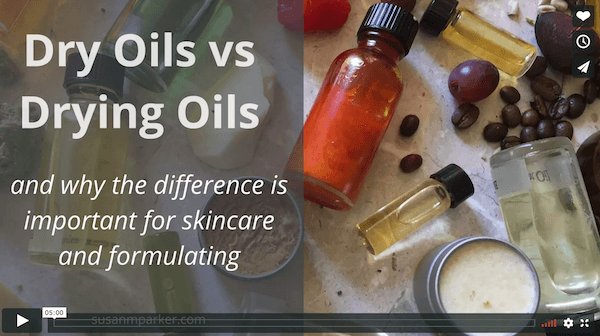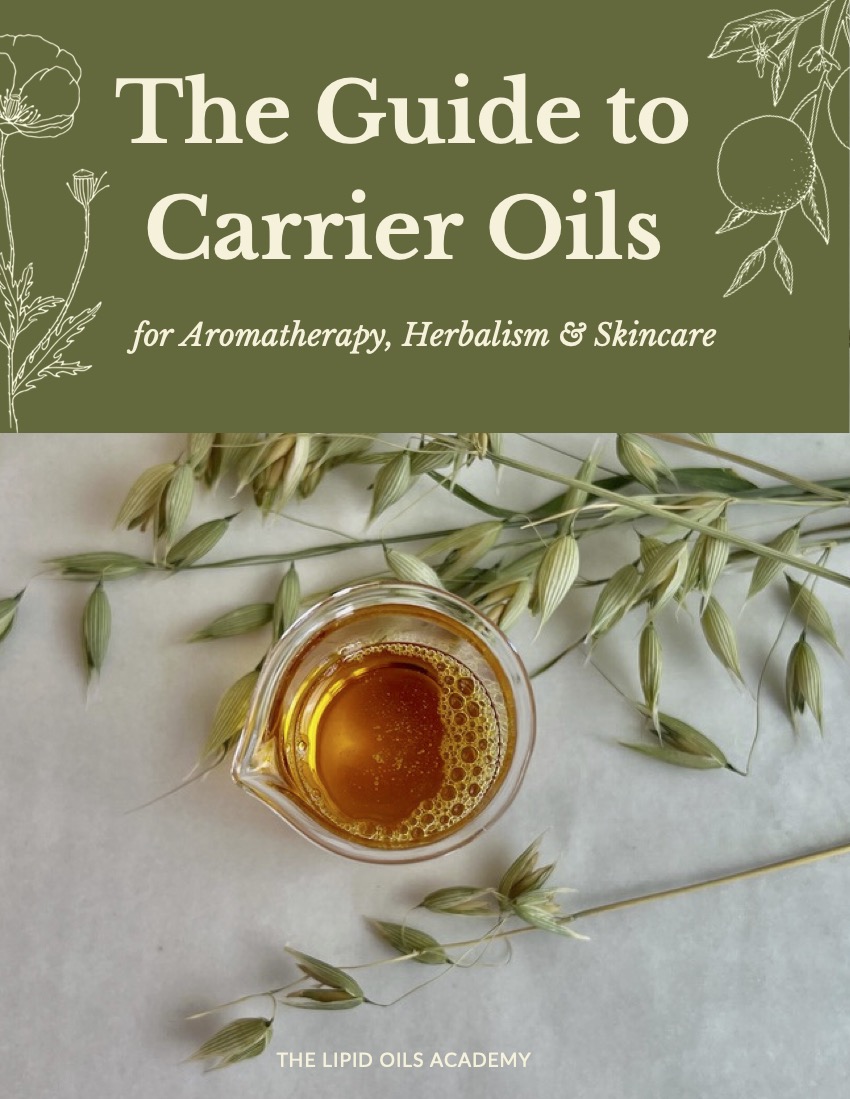When you’re working with carrier oils, you may have notice that some of the oils dry out. A drip down the side of the bottle might harden over time, or a cap might just refuse to come off if the oil underneath has dried. These are the drying oils.
Other carrier oils and butters are dry oils, meaning they feel dry to the touch.
To talk about drying oils first, we’ll use paint as an example. Oil paint is made from of plant oils that will literally dry over time, like flaxseed oil which is the traditional medium used by artists throughout history.
Oils that dry can be used for all kinds of industrial uses; paint, and varnishes, binders for hardboard, sealants, plasticizers, linoleum flooring, core oils, coatings and printing ink. These are being replaced with oil-free, synthetic compounds now but, the use of the polyunsaturated plant oils for a multiplicity of uses is vast and ancient.
These are also the oils that are important foods for our diet. The essential fatty acids, or EFA’s are of this group of oils and are important for our health and overall nutrition. When using them for food it is vital that they don’t dry and must be fresh and not oxidized to be healthful. These oils include flax, chia, grape seed, walnut, kiwi, perilla, and sacha inchi seed oils.
The Case of the Dry and Drying Oils When speaking of plant oils, these two phrases can be a point of confusion. It sounds as though it’s just two ways of saying the same thing. But they aren’t. They mean two very different things.
Let’s discuss…. Oxygen is the determining factor with these oils; for health they need to be FRESH so they can carry oxygen in the body once they are consumed. For paint, we want them to oxidize and dry so that the pigments they are combined with are a permanent record.
Dry Oils Dry oils on the other hand, feel dry on the skin. They absorb well into the skin’s top layers and don’t feel oily or greasy. They can also help oily skin by minimizing the over production of natural skin oils and calming down over active sebaceous glands. What gives these oils the dry feeling are tannins and other plant compounds that are tightening and drawing.
Camellia seed oil from the same botanical family that gives us black and green tea is one of the oils that absorb well and are considered dry. Others are hazelnut, grape seed and a variety of tropical butters that go on to the skin and coat it without feeling oily.



I’m late to watch this; very helpful video. I don’t see the write-up though.
Hi Kim,
Here’s a link to it. This was in the email but didn’t make it to the blog.
https://susanmparker.com/wp-content/uploads/2018/05/Dry-and-Drying.pdf
Hi Susan,
Thank you for the video, I appreciate them all and make sure I view them all. : )
From viewing the PDF Grapeseed falls into both categories? (drying & dry)
Can you mention a few butters that are also ‘Dry Oils’ that you mentioned in the PDF, please?
Susan,
Thanks so much for this informative and easy to assimilate explanation of the difference between these types of oils. This knowledge makes it much easier to formulate the best skin care products!
Linda
So if you use camellia seed oil on dry skin is it safe to assume that it could make dry skin much drier?
Hi Delilah, I wouldn’t say that it would make dry skin drier but it may toughen it slightly. The dry feel is the oil having qualities of surface protection but without the oily feel. And for very dry skin, there are probably better choices. One of the ways of choosing is to pick plants that grow in hot dry climates with the idea that plants grown under those conditions bring their ability to survive under harsh conditions to the oil. Argan, jojoba, prickly pear, and others fall in this category.